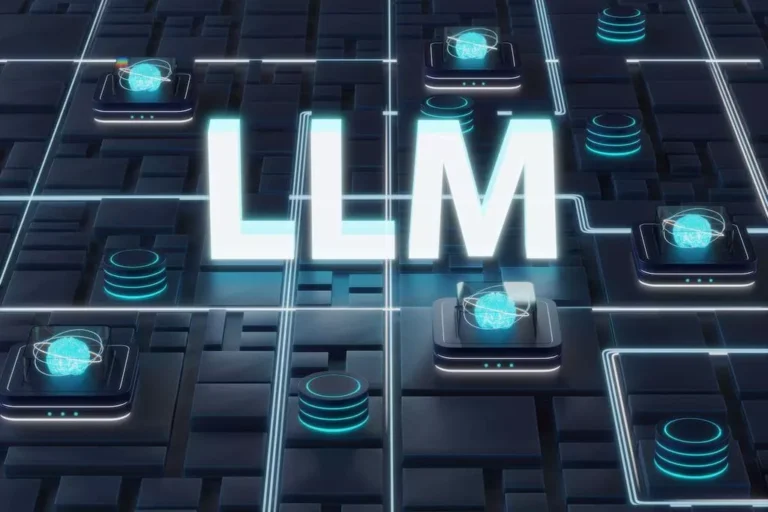Large Language Model (LLM): Everything You Should Know

In recent times, we have increasingly encountered the large language model (LLM) concept. Demand has led to constantly developing portals and solutions based on LLMs. ChatGPT became the fastest-growing consumer app in the world, amassing 100 million users a few months after its launch, proving LLMs are here to stay. This is also evidenced by the fact that at the beginning of 2023, Google presented Bard as its answer to ChatGPT. Later, other large language model examples began to appear. Let’s discuss what LLMs are, how they function, and their strengths.
The Definition of LLMs
A large language model (LLM) is a large-scale deep learning framework developed to execute various natural language processing (NLP) tasks. Such structures utilize specific algorithms and are taught with a considerable volume of data — therefore, large. This lets you identify, translate, forecast, or create text or other content materials.
LLMs, also called neural networks (NNs), are computing structures modeled after the human brain. Such NNs operate using a multi-layered system of nodes reminiscent of neurons.
Besides teaching human languages to create artificial intelligence (AI) applications, such models are taught to successfully cope with various activities, e.g., realizing the structure of proteins, creating code, etc. LLMs must be pre-trained and adjusted like our brains to categorize data, answer requests, summarize materials, and compose drafts. Problem-solving potential enables the systems to be utilized in various fields, including medicine, banking, and entertainment, where LLMs are adopted as translation, bots, online assistants, etc.
Neural network architecture allows the adoption of very large structures, often with hundreds of billions of indicators. Such colossal algorithms may absorb enormous volumes of information, often from the Internet but also from channels like Common Crawl, which includes more than 50 billion materials, and Wikipedia, which has about 57 million articles.

We are confident that we have what it takes to help you get your platform from the idea throughout design and development phases, all the way to successful deployment in a production environment!
How do LLMs Work?
LLM takes a holistic approach that includes different elements.
At the initial level, such structures need to be taught on a significant volume of data (such a dataset is also known as a corpus), often more than a petabyte. Training involves several steps and, as a rule, starts with unsupervised learning methods. This approach involves teaching the system on unstructured and unlabeled databases. The main argument in favor of machine learning is access to more information. During this period, the structure identifies various links between concepts and their meaning.
The next stage involves teaching and fine tuning LLMs with some elements of self-supervised learning. At this moment, a particular marking of information occurs, which helps the system more accurately define various concepts.
After this, LLM deep learning occurs through modification of the NN. The transformer architecture enables the language structure to correctly define and realize links between terms and their meaning with a self-attention algorithm. Such a mechanism may assign a score, usually called a weight, to a given component (or “token”) to define connections.
When the large language model teaching is completed, a base is formed on which AI-baked systems can be utilized to solve various practical problems. By requesting an LLM via a hint, the AI system inference may create a reaction, e.g., an answer to a question, an essay generated from scratch, or sentiment analysis data.
Primary Profits of LLMs
Such generative AI structures provide significant productivity growth potential for firms, making them a valuable asset for companies with substantial information. Below are some of the profits LLMs offer to companies that leverage their potential:
- Maximum efficiency: LLMs can process a considerable volume of data faster than humans. It allows firms to optimize work, automate routine activities, and obtain helpful insights from vast databases.
- Increased accuracy: LLMs utilize pre-collected data and contextual understanding to maximize language translation and retrieval efficiency. Their ability to study from many data channels helps them overcome the restrictions of rule-based solutions. This enables precise language understanding, optimal content advice, and accurate text composing.
- The versatility of applying: LLMs are widely utilized in different fields, from law and economics to advertising and commerce, raising flexibility and value. Whether it’s a medical diagnosis, economic forecasting, or the development of a custom marketing campaign, LLMs may revolutionize how you approach different problems.
- Creative approach: Advanced LLMs can produce creative text based on context. It creates endless opportunities to brainstorm different concepts and help find innovative solutions to complex problems.
LLMs can improve and adapt as they gain new insights through prompt tuning and contextual learning. This ongoing training allows them to develop and gain experience with specific programs, standards, and technologies.

Main Limitations of LLMs
High cost, significant data sets, technical expertise, and the need to utilize heavy-duty computing infrastructure to develop and maintain LLMs have proven to be substantial barriers to entry. Let’s look at other difficulties that can arise with such AI-backed products:
- Susceptibility to plagiarism: LLMs may accurately reproduce sequences of terms (and sometimes a set of sentences) from the datasets utilized in training. Users notice that structures like ChatGPT can repeat past data entered by other people.
- The large language technology can produce generic answers: Besides reproducing information learned during training, language models may generate generic answers that do not match your specific request. To eliminate this problem, you must use reinforcement learning based on human feedback or customization based on your unique database.
- Difficult to interpret: It is often difficult to understand how LLM comes to a particular conclusion. It may be problematic, especially in fields that require significant transparency and accountability, including the medical or banking sectors. Thus, it is risky to consider the LLM’s advice on patient care if we are unaware of how they arrive at that decision, and it is impossible to control their reasoning.
Please be aware that adopting LLM poses ethical challenges regarding potential misapplication. There is a risk of composing harmful or offensive content, fake data, or impersonation, which may be utilized for fraud and manipulation.
Areas of Application of LLMs
According to research, more than 50% of firms are already testing AI-backed systems, mainly LLMs. You must explore the most pragmatic options for using such structures in a business environment to get the most out of such systems. Below, we will analyze the main LLM applications:
- Content creation: LLMs empower writers, marketers, and creatives by generating drafts, suggesting edits, and creating detailed reports. This feature speeds up content creation and allows people to concentrate on strategic and creative aspects rather than mechanical work.
- Client service: LLMs change client interaction by offering automated (but highly personalized) answers to questions. This solution allows organizations to implement 24/7 support without involving significant human resources, increasing client loyalty.
- Language translation: LLMs help overcome language barriers and allow your company to present its products to a global audience. Such structures suggest correct translation and localization in real-time, making the site accessible to everyone.
- Education and training: LLMs can provide personalized education and training by tailoring content to students’ needs. They may suggest tutoring services, ask questions, and offer explanations based on the topics that students have covered previously.
- Product research and development: LLMs have become a reliable tool for creativity and brainstorming. They may generate research proposals, accelerate research across disciplines, and store collective knowledge for quick access. Researchers utilize LLMs in information processing, hypothesis testing, and predictive modeling.
Firms should utilize LLMs to process and interpret considerable cybersecurity data to better predict, detect, and respond to potential troubles.
Looking to the Future of LLMs
As we delve deeper into large language models, monitoring current affairs and anticipating future tendencies shaping a rapidly evolving field is crucial. Below are some predictions about what awaits us shortly:
- Audio-visual training: Although most developers utilize text to teach LLM, some have added audio and video. This should speed up the development of structures and give them new capabilities.
- Changing workflows: LLM will likely decrease the number of routine and repetitive production procedures.
- Conversational AI: LLMs, including Alexa and Siri, will increase the effectiveness of automated online assistants. They will be able to interpret people’s intentions and respond to entangled commands.
- As exciting as LLMs are, the actual state of algorithms is not ideal. Still, novel versions will gain increased precise and expanded potential as specialists study how to boost their effectiveness while eliminating bias and inaccurate data.
Final Words
In conclusion, it is worth noting that LLMs have demonstrated enormous potential in realizing and composing human text, so their scope of application will significantly expand. Although implementing LLMs presents some challenges, ongoing research and development continue to improve their productivity, interpretability, and ethical aspects. You may approach GlobalCloudTeam to create a large language model for your firm, as, in the proper hands, they can raise the efficiency of various business processes.
Top Articles
ABC of DevOps Testing: Types, Best Practices, and Everything You Need to Know
I am here to help you!
Explore the possibility to hire a dedicated R&D team that helps your company to scale product development.






